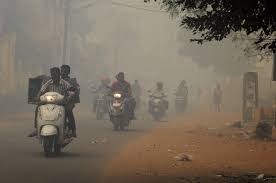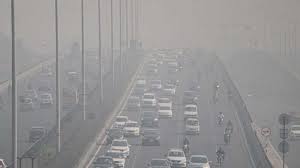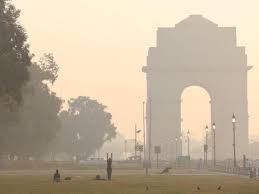A recent assessment of the current situation in Delhi has been done. It is clear that the pollution scenario is grave, as a thick blanket of smog covers the entire city and beyond. This opaque, dangerous fog consists of dust, smoke, and other pollutants.
It can seriously affect human health, especially young children, the elderly, and those with respiratory diseases. Symptoms range from burning eyes and throat irritation to severe respiratory problems. Long-term exposure can even be life-threatening.
Multiple causes aggravating the air pollution crisis in the National Capital Region include stubble burning in nearby states, automobile exhaust, metals and volatile organic compounds from factories, and dust from ongoing construction. Given that the Air Quality Index (AQI) is usually in the red (severe) zone, it becomes more important to take action to ensure safety for you and your family.

Air pollution can be controlled as far as exposure is concerned. This is possible by using air cleansing devices and N95 masks, optimizing air quality indoors, and monitoring air quality index levels through the implementation of practical measures. Information can be powerful, and for these reasons, it is imperative to take preventive action to help you breathe better and remain healthy during such seasons.
Be it travelling, working out, relaxing at home, or any other activity, these measures will keep you more relaxed and careful during the smoggy days in Delhi. Make it your business to ensure your well-being—every breath counts.
Delhi’s Smog Crisis
The issue of Delhi smog has now turned out to be a cyclical one, forming part of the environmental and health calamity of some sort. Every winter, the city is shrouded in a toxic haze caused by a combination of factors: stubble burning in neighbouring states, car emissions, Industrial emissions, and dust from construction sites. This deadly combination leads to very poor air quality, with the Air Quality Index going up to nearly ‘severe’.
The consequences are severe, touching on the respiratory systems and eyes and even leading to chronic diseases such as asthmatics, bronchitis, and cardiac problems. Children, elderly people, and patients with chronic diseases are the most susceptible to overwhelming risks.

The following are some of the measures that have been implemented: government policies, anti-pollution crusades, and sensitization campaigns. However, solving this problem demands cooperation, increased legal requirements, the development of technology, and personal actions. Otherwise, for now, using devices such as air purifiers, wearing masks, and limiting time outdoors in Delhi air should be considered the key to survival.
AQI Categories & Implications
The Air Quality Index (AQI) measures the level of air pollutants and their impact on health. Here are its categories:
1. Good (0–50)
Air quality is good, and it is not a health risk to anybody.
2. Satisfactory (51–100)
Air quality is good but is considered moderate, especially with asthmatic indispositions. Individuals with respiratory problems should avoid long-standing time outside.
3. Moderate (101–200)
Breathing discomfort may occur, especially in some groups, such as children and the elderly. Avoid physical activities outside if you can, especially when pollution is high or the sun is overhead.
4. Poor (201–300)
Prolonged exposure causes respiratory troubles for everyone. People with sensitive skin should avoid going outside. Other people should also avoid going out if possible.
5. Very Poor (301–400)
Health risks remain higher, and the likelihood of breathing problems and the heart increases. Stay indoors and stop going out for any reason at all.
6. Severe (401–500)
All people are vulnerable to acute deterioration of their health. Staying out of sunlight at all costs; medical treatment for illness symptoms.
By observing the AQI, people can avoid doing activities that may harm their health when the measure reaches certain categories of pollution.

Green Initiatives in delhi
1. Promoting Renewable Energy
Migrating from fossil fuel (oil, coal, and gas) based power generation to sources such as solar, wind, and others.
2. Promoting the use of Public Transport and Car Sharing Systems
Some of the programs have been known to include increasing the availability of public means and promoting the use of shared cars, among others.
3. Afforestation and Development of Cities of Trees
Greening enhances the capability of the environment that surrounds a facility to filter pollution to enhance the quality of air.
4. Waste Management Systems in Practice
Promoting correct disposal so that reuse and recycling of waste can be enhanced as well as discouraging burning of waste material.
5. Adopting Electric Vehicles (EVs)
Grants to consumers of electric vehicles and developing networks for electric cars to reduce emission of greenhouse gases.
6. Raising Public Awareness
Launching awareness campaigns to help society deliver small changes such as avoiding the use of plastic items, which are common and not biodegradable.
7. Promoting The Use Of Energy Efficiency Measures
Reducing emissions is supported by products such as efficient appliances and structures that have sustainable construction.
Implementing these initiatives together can have a tangible positive impact on the overall air quality and also on pollution like Delhi smog.
